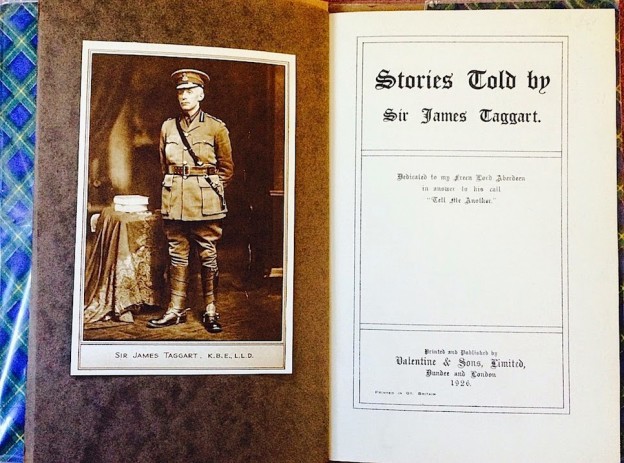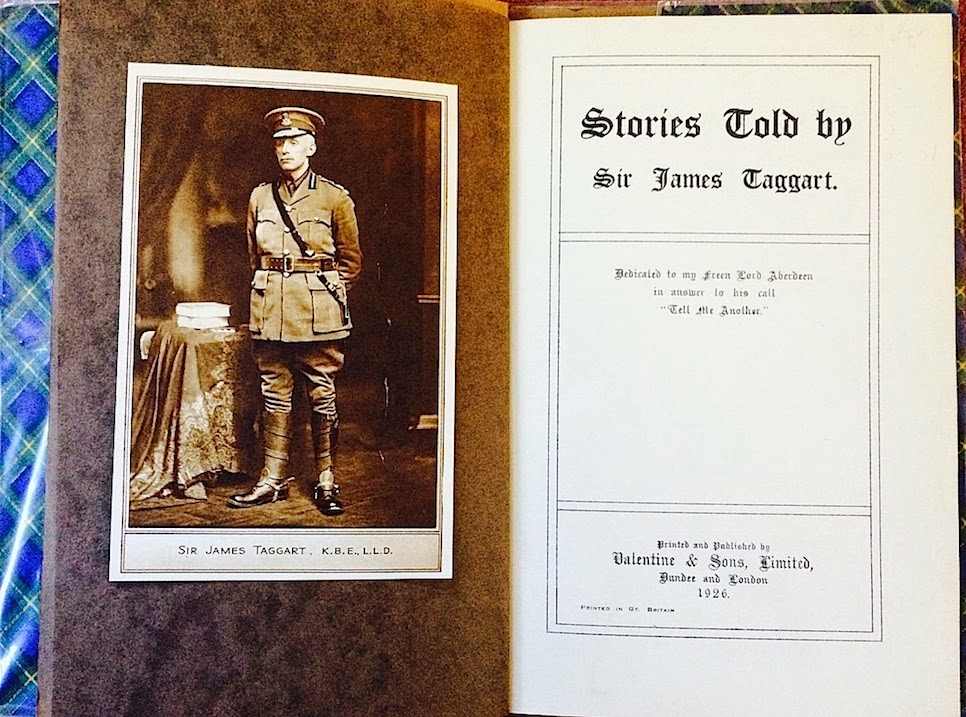Found - a slim volume titled Stories told by Sir James Taggart. (Dundee, London : Valentine & Sons 1926.) This book is in a series of Scottish joke books which include the famous 'bizarre' book Jokes Cracked by Lord Aberdeen.
Lord Aberdeen's pal Sir James Taggart, a former Lord Provost of Aberdeen, was also a famous storyteller, notably against his own townsmen of 'the granite city.' It was said of him that he told 1000 jokes a year. His mournful look in the above photo reminds one of the old saying that '...to a Scot a joke is no laughing matter..' Here are a few short ones to get the flavour: 'An Aberdonian went away for a month's holiday, taking with him a dark green shirt and a pound note. He changed neither of them.' Or try this: 'A traveller at Euston Station was booking a third class single to Inverness and was informed, "Change at Aberdeen.'' "Na, na," said the traveller, "I'll lake my change now, l've been in Aberdeen before."
Almost all the jokes are on the themes of incredible meanness and/or drunkeness. Here are a selection of four the better jokes -the first about Lord Aberdeen himself :
Continue reading



